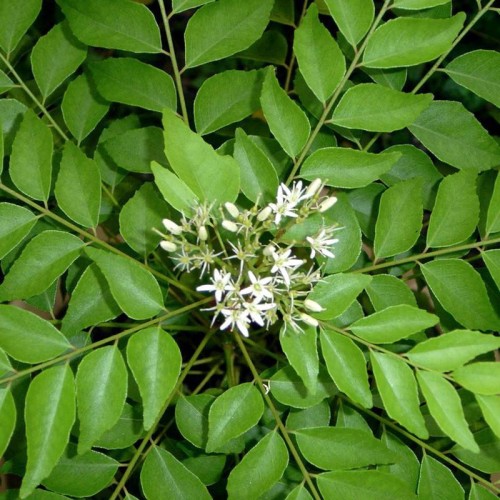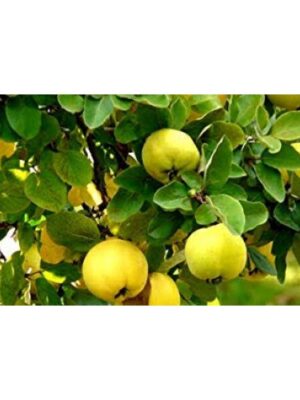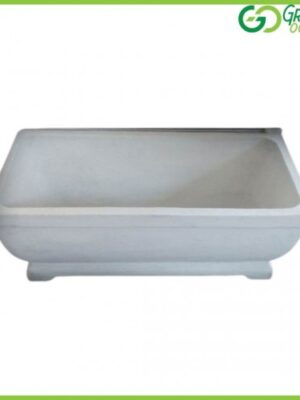Free home delivery over Rs 999

CURRY PLANT
Original price was: ₹399.00.₹99.00Current price is: ₹99.00.
Description
Murraya koenigii is a most attractive, small evergreen tree with wonderfully sweet, curry-pungent foliage. Murraya koenigii well known for their aromatic and distinctive flavour and medicinal properties.
What makes it special:
- One of the most popular houseplant.
- Highly valuable traditional medicinal plant.
- Very low maintenance plant.
- Can be grown in the pot.
The Curry plant is native to the Indian subcontinent, and can be found growing wild throughout the country and temperate climates and has compound leaves areas where it can grow up to 5 – 6 meters high. Its green elongated leaves are glossy, aromatic and beautiful.
The plant produces white fragrant flowers (terminal cymes) which can self-pollinate to produce small shiny-black drupes containing a single, large viable seed, the leaves are highly aromatic when rubbed or bruised. They are best used fresh in cooking (dried leaves may be used but have significantly diminished flavor).
Plant Specifications
| Plant Height | 6 inch (15 cm) |
| Plant Spread | 5 inch (13 cm) |
| Common Name | Curry Leaves, Kadi Patta, Meetha Neem, Murraya koenigii |
| Maximum Reachable Height | 2.00 to 6.00 Metres |
| Flower Colour | White |
| Bloom Time | February-April |
| Difficulty Level | Easy to grow |
Planting And Care
Refer our Garden Guide for detailed procedures and meanings of words related to gardening.
Sunlight
- Keep the plant outdoor with bright natural light.
- Initially (Seedling stage) protect the curry plant from direct harsh sunlight as it can cause damage to the foliage.
Soil
- The soil should be well drained and fertile for growing Curry plant.
Watering
- Water the plant when the topsoil (1-2 inch) in pot feels dry to touch.
- Do not overwater the plant.
- Water thoroughly in the summer and reduce watering in winter and rainy season.
Application of Fertilizer
- During the main growing season feed the curry plant with organic fertilizer once a month.
- Loosen the topsoil without disturbing the roots of the plant so it can uptake the nutrients and moisture easily.
Re-potting
- When a plant outgrows in current pot, re-pot with fresh potting soil and some fertilizer.
- Do the re-potting late evening and keep the plant in shady area for 2 to 3 days and then move the plant in its suitable climatic condition.
For re-potting procedure click here
Plant Protection
- Remove dead, infected or damaged plant parts and discard them away from the plants.
- For any insect attack or disease, you can use Neem oil, Eucalyptus oil or Citrus oil spray for primary treatment.
Donts
- Do not overwater the plant especially when pot does not have drainage holes.
Curry Leaves Care
Initial care for 1-2 weeks after receiving plant at your location:
- Check the moisture in the soil before watering it.
- Poke your finger into the soil, if dry then apply water.
- Keep the plant in Natural direct or indirect bright Light.
- Do not re-pot for min. 2 weeks after receiving it.
Key requirements to keep plant healthy:
| Sunlight | Nutrient rich well drained fertile soil. |
| Watering | moderately. |
| Soil | well-draining and nutrient rich soil |
| Temperature | 20 – 35 degrees celsius. |
| Fertilizer | Apply any organic fertilizer |
Curry Leaves Special Feature
Interesting house plant, the leaflets of which can be snipped for cooking.
Curry Leaves Uses
Ornamental Use:
- The plant is used for ornamental purpose
Medicinal Use:
- Curry leaves are said to have alkaloids that help heal wounds that are not too deep
- Curry leaves help increase digestive secretions
- The extract from the curry leaves have an active constituent which is anti-diabetic
- Curry leaves have properties that can help in lowering ones blood cholesterol levels
- Note: The following information is general guidelines
- Be sure to ask your healthcare provider for guidelines
Culinary Use:
- used in cooking vegetables, great herb





Reviews
There are no reviews yet.